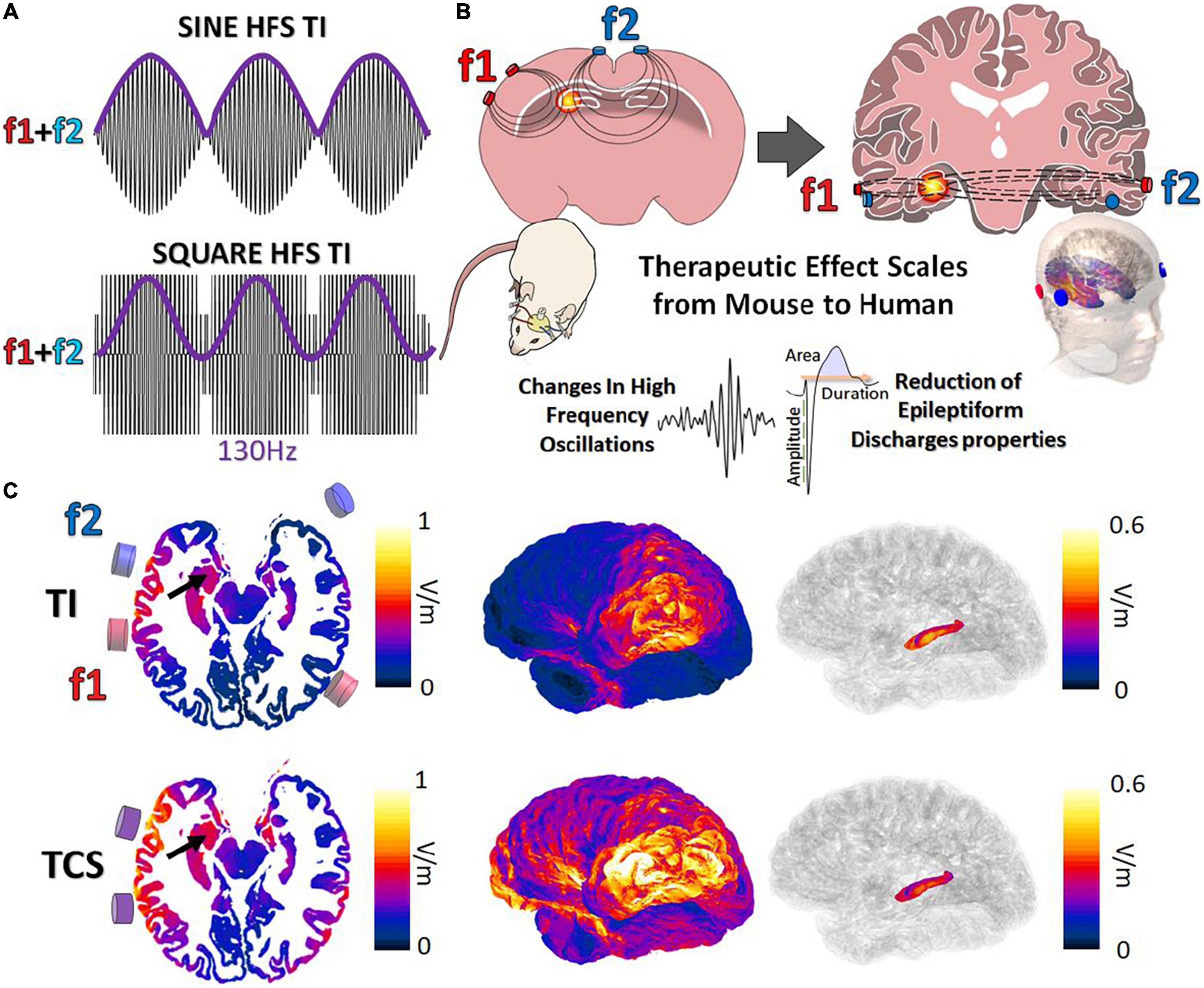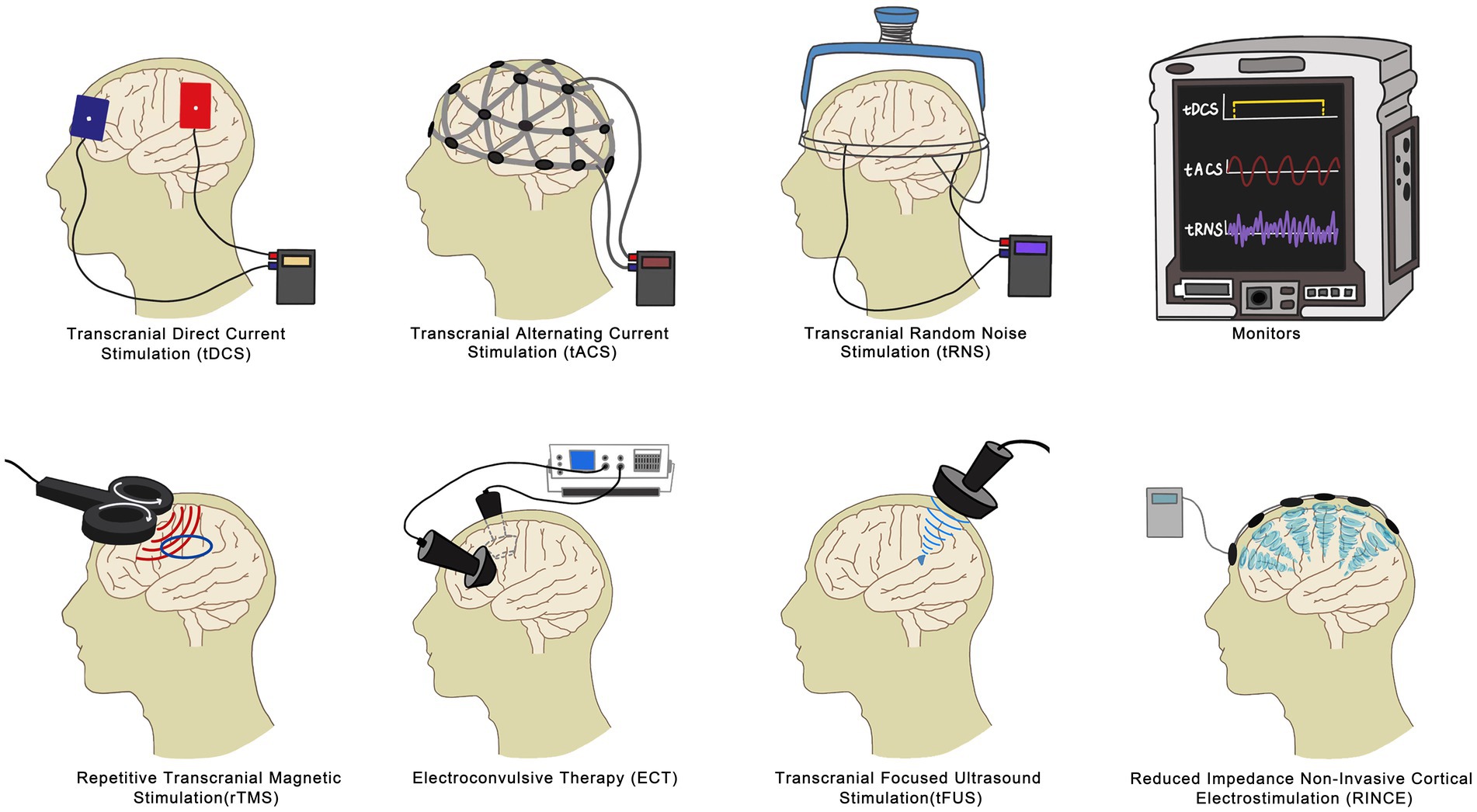Non-Invasive Neurostimulation: Success, Science, and Safety
At NeuroTechInsider.com, we go beyond marketing fluff to give you the raw data and real results on today’s most advanced neurostimulation tech. Whether you’re wrestling with insomnia, migraines, anxiety, or burnout, there’s a fast-growing field of wearable devices delivering targeted relief — without meds or invasive procedures. One of the most promising? Non-invasive neurostimulation.
This article breaks down the science, clinical results, and real-world success of leading non-invasive techniques like Transcranial Magnetic Stimulation (TMS), transcranial Direct Current Stimulation (tDCS), and more. We’ll walk you through how these tools are helping people reclaim mental clarity, reduce pain, and improve sleep — and why they’re no longer limited to hospitals or elite clinics.

What is Non-Invasive Neurostimulation?
Non-invasive neurostimulation — also known as non-invasive brain stimulation (NIBS) — refers to a set of technologies that stimulate specific areas of the brain using external devices. No surgery. No implants. Just controlled electrical or magnetic fields that gently nudge neural activity toward a healthier baseline.
These techniques are used both in clinics and increasingly at home for:
- Improving sleep and mood
- Reducing chronic pain
- Supporting recovery from neurological damage
- Managing conditions like ADHD, anxiety, and depression
And the best part? Many of these therapies are now available in consumer-friendly wearables. NeuroVIZR, Sensate, and Apollo Neuro are just a few of the market leaders pushing the frontier of brain wellness devices.
Core Technologies You Should Know
- TMS (Transcranial Magnetic Stimulation) – Uses magnetic fields to stimulate neurons in the cortex. Mostly clinic-based.
- tDCS (Transcranial Direct Current Stimulation) – Sends low-intensity currents to modulate cortical excitability. Often home-based.
- tONS (Transcutaneous Occipital Nerve Stimulation) – Targets nerves at the back of the head to relieve migraines.
- TPS (Transcranial Pulse Stimulation) – Delivers mechanical pulses to improve cognition in neurodegenerative conditions.
Evidence-Based Success Across Conditions
Let’s cut through the hype. Here’s what real-world clinical trials and systematic reviews are showing about non-invasive neurostimulation success.
1. Disorders of Consciousness (DoC)
For patients recovering from coma or trauma-induced unconsciousness, stimulation can be the spark that rewires the lights back on — literally. In a 2024 meta-analysis published in Clinical Neurophysiology, repetitive TMS (rTMS) applied to the left dorsolateral prefrontal cortex (DLPFC) showed significant improvements in patients with minimally conscious states, compared to sham treatments.
“Multiple treatment sessions were more effective than single sessions, and benefits can be sustained long-term.” — Elsevier Clinical Neurophysiology

Protocol Summary:
- Technique: High-frequency rTMS over DLPFC
- Sessions: 10–20+ daily sessions show best results
- Outcome: Improved conscious response, attention, and communication
2. Migraine Management
Say goodbye to dull ache days and prescription cycles. Studies show that tONS and rTMS can significantly cut down migraine frequency. According to Frontiers in Neuroscience, high-frequency occipital stimulation via tONS produced a response rate up to 9x higher than placebo.

Benefits Breakdown:
- Technique: High-frequency occipital tONS or rTMS
- Effectiveness: Up to 9x reduction in migraine days
- Side Effects: Minimal — mild tingling or warmth during session
3. Mental Health Applications
We’re entering a new age in drug-free mental health treatments. Tools like TMS and tDCS are rapidly gaining traction for conditions like generalized anxiety disorder (GAD), depression, and substance use disorder (SUD).
A systematic review published by Frontiers in Human Neuroscience noted moderate to large effect sizes for symptom reduction — especially in younger populations and when protocols are tailored per condition.

“Optimal protocols are still being refined, but effects are strongest when personalized.” — Frontiers in Neuroscience, 2023
Real-World Use Cases:
- Conditions: Anxiety, addiction, PTSD, OCD
- Devices: CES headsets, tDCS bands (like CES Ultra)
- Sessions: 20–30 mins daily for 2–6 weeks
4. Pain Relief and Rehabilitation
Non-invasive neurostimulation isn’t just about brain fog or stress. For people battling chronic pain — from fibromyalgia to post-stroke neuralgia — devices like tDCS and rTMS are becoming go-to options.
By targeting the motor cortex, these techniques help interrupt the brain’s pain signaling. A 2024 summary published in The Journal of Pain Management confirmed significant reductions in reported pain scores, with effects that can last several weeks post-treatment.
Key Outcomes:
- Best for: Neuropathic pain, stroke-related pain, fibromyalgia
- Mechanism: Suppresses pain perception via cortical modulation
- Relief Duration: Up to 4–6 weeks post-therapy
Some of the most promising at-home tools for pain modulation include Apollo Neuro and NeuroVIZR, which leverage vibration, light, or rhythmic stimulation to retrain pain-processing networks in the brain.
5. Neurodegenerative Disease Support
We’re seeing a quiet revolution in the treatment of Alzheimer’s, Parkinson’s, and age-related cognitive decline. Devices like TPS (Transcranial Pulse Stimulation) and rTMS have shown potential to enhance neuroplasticity and memory performance — without a prescription.
In one clinical trial, elderly participants with early cognitive impairment saw noticeable improvements in focus, memory recall, and verbal fluency after just 4 weeks of rTMS sessions. These gains were sustained for months, especially when combined with cognitive training and lifestyle support.
Tech Highlights:
- TPS: Best for Alzheimer’s, mild cognitive impairment
- rTMS: Boosts executive function and mood
- Neurofeedback Integration: Amplifies outcomes when paired
What Makes Neurostimulation Work Best?
Not all protocols are created equal. The success of a neurostimulation treatment depends on:
- Session Frequency: More frequent, shorter sessions show greater effects than one-off treatments.
- Stimulation Site: Targeting specific brain regions (like DLPFC or motor cortex) matters.
- Condition Stage: Those in early or mild states respond better than late-stage cases.
- Device Quality: FDA-cleared or CE-certified wearables are more consistent.
“One-size-fits-all doesn’t work for brain modulation. Personalization is key.” — NeuroTechInsider.com
At-home devices like Sensate and Audicin use calming frequencies, vagus nerve stimulation, or 40Hz light-sound pulses to create personalized daily routines — no clinic visit required.
Safety, Risks & Tolerability
Compared to pharmaceuticals and surgical interventions, non-invasive neurostimulation is remarkably safe. Side effects, when they occur, are usually mild and temporary:
- Scalp tingling or itching during sessions
- Transient headaches or lightheadedness
- Fatigue in early adaptation phases
As with any intervention, it’s critical to follow manufacturer guidelines and consult a specialist if you’re managing serious neurological conditions. Many consumer neurostim devices are designed for self-regulation and biofeedback, reducing risks of misuse.
Future Outlook: Where Neurostimulation Is Headed
The field is evolving — fast. Here’s what’s coming down the pipeline:
- AI-Personalized Brain Maps: Adaptive protocols based on your EEG or HRV trends
- Closed-loop Neurostimulation: Devices that respond in real-time to brain state changes
- Expanded Wearable Access: CES, vagus nerve, and photic stimulation tools for home use
- Combination Therapies: Pairing stimulation with sleep tech, nootropics, or meditation
If you want to stay ahead of the curve, subscribe to NeuroTechInsider.com where we review every device entering this frontier — backed by science, user data, and honest insights.
Final Verdict: Is Non-Invasive Neurostimulation Worth It?
Yes — but only when used right. These tools aren’t magic bullets, but they’re powerful allies in the battle against brain-based suffering. From pain and migraines to cognitive decline and burnout, non-invasive neurostimulation offers evidence-based hope.
If you’re seeking natural solutions for better brain health, our team at NeuroTechInsider.com is here to guide you through the noise with strategic reviews of the best tools in the game.
Top Questions People Ask
❓ Is neurostimulation safe for daily use?
Yes, most FDA-cleared and CE-certified devices are designed for regular home use, especially those offering low-current tDCS or vagus nerve stimulation.
❓ How fast can I expect results?
Some people report benefits within a week, while others need 3–4 weeks of consistent sessions. The effects also tend to be cumulative.
❓ Can I use it with medications?
Usually yes, but always consult your doctor. Some devices may enhance or interfere with psychiatric or neurological medications.
❓ What’s the best neurostim device for sleep?
Our top picks for sleep and circadian alignment include Sensate and NeuroVIZR — both use gentle stimulation to shift your nervous system toward rest mode.
References & Further Reading
https://ars.els-cdn.com/content/image/1-s2.0-S1878747924000163-gr1.jpg
